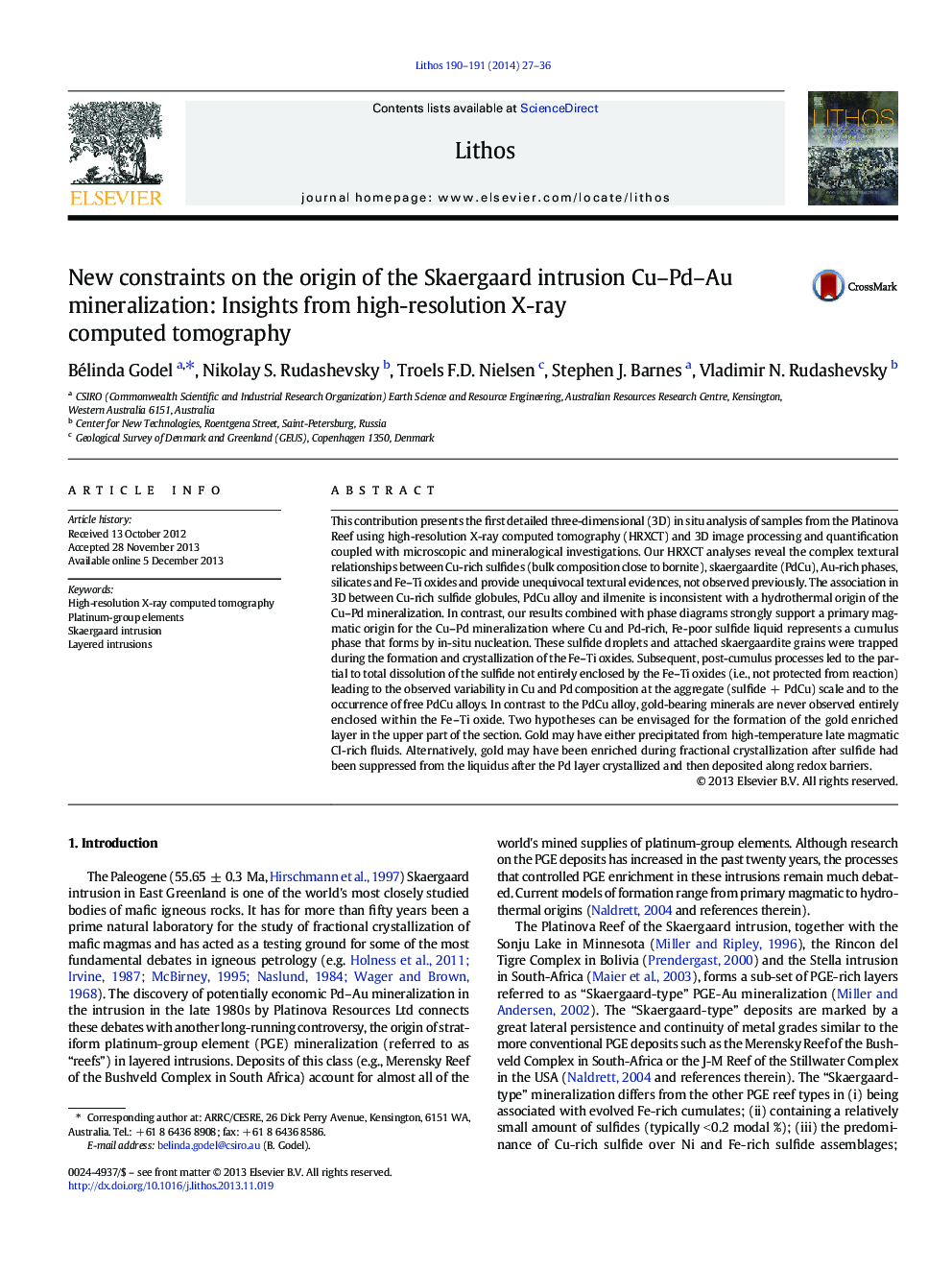| کد مقاله | کد نشریه | سال انتشار | مقاله انگلیسی | نسخه تمام متن |
|---|---|---|---|---|
| 4716004 | 1638680 | 2014 | 10 صفحه PDF | دانلود رایگان |

• First 3-D in situ analysis of samples from the Platinova Reef (Skaergaard intrusion)
• Our study provides unequivocal textural evidences, not observed previously at Skaergaard.
• Our observations are inconsistent with a hydrothermal origin of the Pd mineralization.
• Our results strongly support a magmatic origin of the Pd mineralization by in situ sulfide nucleation.
• Our results show that post-cumulus processes led to the observed variability in sulfide/PdCu ratios.
This contribution presents the first detailed three-dimensional (3D) in situ analysis of samples from the Platinova Reef using high-resolution X-ray computed tomography (HRXCT) and 3D image processing and quantification coupled with microscopic and mineralogical investigations. Our HRXCT analyses reveal the complex textural relationships between Cu-rich sulfides (bulk composition close to bornite), skaergaardite (PdCu), Au-rich phases, silicates and Fe–Ti oxides and provide unequivocal textural evidences, not observed previously. The association in 3D between Cu-rich sulfide globules, PdCu alloy and ilmenite is inconsistent with a hydrothermal origin of the Cu–Pd mineralization. In contrast, our results combined with phase diagrams strongly support a primary magmatic origin for the Cu–Pd mineralization where Cu and Pd-rich, Fe-poor sulfide liquid represents a cumulus phase that forms by in-situ nucleation. These sulfide droplets and attached skaergaardite grains were trapped during the formation and crystallization of the Fe–Ti oxides. Subsequent, post-cumulus processes led to the partial to total dissolution of the sulfide not entirely enclosed by the Fe–Ti oxides (i.e., not protected from reaction) leading to the observed variability in Cu and Pd composition at the aggregate (sulfide + PdCu) scale and to the occurrence of free PdCu alloys. In contrast to the PdCu alloy, gold-bearing minerals are never observed entirely enclosed within the Fe–Ti oxide. Two hypotheses can be envisaged for the formation of the gold enriched layer in the upper part of the section. Gold may have either precipitated from high-temperature late magmatic Cl-rich fluids. Alternatively, gold may have been enriched during fractional crystallization after sulfide had been suppressed from the liquidus after the Pd layer crystallized and then deposited along redox barriers.
Journal: Lithos - Volumes 190–191, March 2014, Pages 27–36